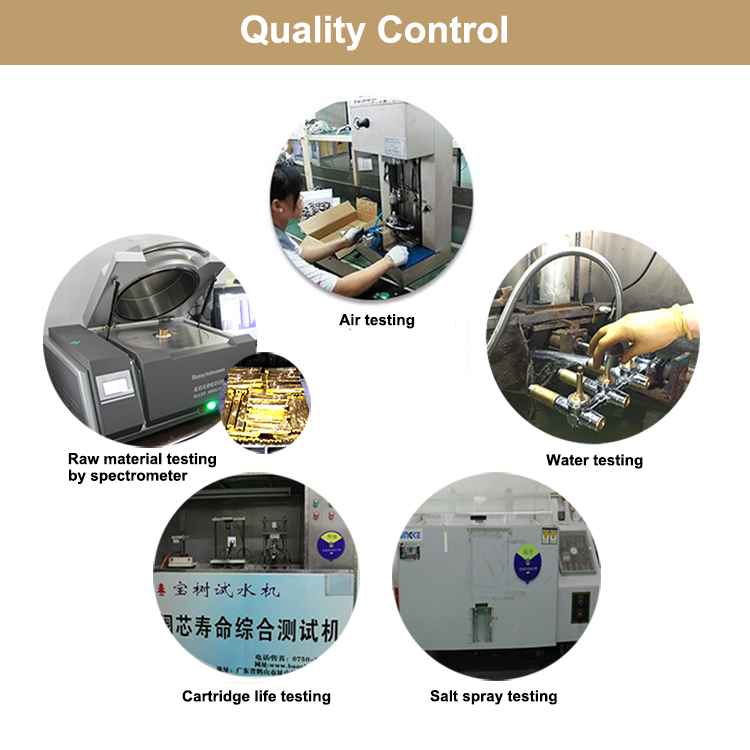Analysis and research on the anti-loose vibration performance of double nut
Analysis and research on double nut anti-loose vibration performance (Northwestern Polytechnical University, Xi'an 710072, according to its reliability and ease of disassembly and assembly, the bolt connection in mechanical equipment is mostly double nut anti-loose. As we all know, the bolt connection adopts double nut anti-loose and The principle of single nut anti-loose is the same, that is, the "self-locking" is different in that the anti-loose effect of the double nut is much higher than that of the single nut. The reason is that after the two top nuts are tightened, the two nuts are The thread side of the threaded pair of bolts is subjected to the opposite direction of the axial direction of the thread, so that the external force makes it impossible to reduce the pressure on the thread in the thread pair. The external force reduces the square pressure, and the other pressure must rise, thereby ensuring The total pressure on the thread in the thread pair is unchanged, that is, the total resistance torque of the anti-loose is constant. "Self-locking" is guaranteed.
The double nut fastening structure causes the bolt to be pulled in the screwing section and the nut is pressed to form a longitudinal compression of the threaded coupling pair. Although the double nut fastening is a kind of anti-loose means with low reliability, heavy weight and increased screw length (increased cost), it is easy to be loaded and unloaded due to its simple structure; it is generally used for low speed heavy load or stable load. . In order to save costs, one standard nut + 1 thin nut is usually used. In some cases, in order to prevent misplacement and to ensure that the underlying nut has sufficient strength, a pair of standard nuts are used to increase the looseness reliability. Research shows that: 1 The setting of the tightening torque combination of the upper and lower nuts plays a key role in the anti-loose performance of the joint. 2 Install the thin nut first, and then install the standard nut assembly method to get better anti-loose performance.
2 double nut fastening installation method At present, the conventional installation method in China is: first tighten the lower nut with 80% of the specified tightening torque, and then tighten the upper nut with 100% tightening torque. However, the choice of torque combination is not fixed and needs to be confirmed by special experimental analysis. The test was carried out using a M208 threaded fastener lateral vibration tester. The common method in foreign countries is: First, tighten the thin nut (lower nut) with 25%-50% of the specified tightening torque. Next, tighten the standard nut (upper nut) with 100% tightening torque. Note: When tightening the standard nut, use a wrench to secure the thin nut to prevent it from rotating.
It should be noted that the stress on the thin nut thread will be reduced after tightening the standard nut; this is also the reason we can apply the appropriate pre-tightening force to the bolt before the thread locking phenomenon occurs. We must choose enough pre-tightening torque. To tighten the thin nut. The greater the grip length of the joint, the greater the initial torque required to tighten the thin nut. It is difficult to calculate the pre-tightening torque of a thin nut due to a number of factors. The pre-tightening torque of the thin nut is usually selected from 25% to 50% of the total tightening torque. In addition, the spring lock washer makes the fastener more likely to loosen, because the spring lock washer will be plastically deformed when the pre-tightening force is large, and the "tightening" phenomenon may occur in the pre-tightening.
3 double nut anti-loose vibration test According to the requirements and regulations of GB10431-89 fastener lateral vibration test method, the anti-loose effect of the nut should be judged by the lateral vibration test. The transverse vibration test can accurately measure the pre-tightening force of the fastener connection during the vibration test, describe the change process of the pre-tightening force in the test, and give the pre-tightening force and the number of vibrations (or the time curve), and The variable of expected tightening force is used as a criterion to measure the loose connection of fasteners. China has stipulated the national standard GB10431-89 according to the SAE guidelines. Since this criterion was formulated in China, during this period, Chinese scientists and technicians mainly adopted the general purpose. The vibration test bench has been tested several times, and the experimental methods and fixtures have also been greatly improved. In order to accurately determine the overall design of the aircraft.
Simulating the vibration test conditions of the fastener under the lateral load and obtaining experimental data, the experimental equipment is an important prerequisite for accomplishing the problem. Therefore, on the basis of comprehensive domestic and foreign test methods and the characteristics of the test bench, the lateral vibration tester fixture and data acquisition system of the threaded fasteners have been appropriately modified, making it a special test for fastener lateral vibration. Taiwan" (hereinafter referred to as the test bench). The test bench has the characteristics of small volume, accurate loading, convenient operation, stable performance, short test period, etc., but the test bench has a low service life in some links. Practice has proved that the test bench is an ideal experimental equipment.
The horizontal vibration tester of the fastener was used to test the anti-loosening performance of the double nut. Through the processing of the experimental data and the analysis of the test phenomenon, the following main conclusions were obtained: 3.1 The lateral vibration test is suitable for the fastener to prevent loosening. Performance studies. The fastener can be loosened in a short time, and the measured data is more regular.
3.2 The relationship between the pre-tightening force of the double nut is analyzed. When the upper nut is tightened, the pre-tightening force of the bolt becomes larger. As the pre-tightening force of the upper nut increases, the pre-tightening force of the bolt becomes larger. However, the pre-tightening force of the bolt is not a simple addition of the pre-tightening force of the upper and lower nuts.
The double nut tightening torque and deformation are not completely linear.
3.3 Through the vibration test of the double nut connection subjected to different pre-tightening forces, the variation curve of the deformation amount with time is obtained. The research results show that: 1 When the nut tightening torque is timing, the anti-loose effect of the double nut connection depends on the tightening torque of the upper nut. The relaxation curve of the 2 double nut connection system has three distinct characteristic segments. The initial stage of the experiment is a rapid relaxation phase. The curve indicates that part of the preload force of the locking system is released quickly in a short time, and the time is about 10 minutes. Generally, it drops by 10% to 20%; then there is a relatively stable phase during which the preload has a relatively long period of relative stability. The third stage is the rapid decline phase of the pre-tightening force. When the considerable pre-tightening force is lost, the frictional force drops to a certain critical value. At this time, the loosening moment generated on the nut exceeds the friction torque in the screw pair, the nut Starting to reverse, the preload tightened sharply. The second stage curve representation is different under different conditions, and the deformation sometimes decreases gently, sometimes in a stepped manner, which may be related to the friction between the two nuts. After the vibration of the fastener system for a period of time The friction is reduced, the fasteners are loosened, and the pre-tightening force is reduced. 3 Compare the pre-tightening force of the double nut coupling device with time under different pre-tightening force. When the tightening torque of the upper and lower nuts is 18N.m, the fastener retraction time is about 50 minutes, and the change of the loosening curve The regularity is basically the same as the curve when the tightening torques of the upper and lower nuts are 16N.m and 20N.m respectively. In both cases, the preload of the bolts is basically the same.
The research on the anti-loosening performance of the double nut not only studies the anti-loose effect of the double nut connection under different assembly modes, but also needs more in-depth research on the experimental device and test method of the fastener vibration. Due to the limitations of time and experimental conditions, the following work needs further study: 1 The relationship between the tightening torques of the upper and lower nuts needs to be analyzed in depth to systematically analyze the double nut connection. 2 Analyze the deformation curve with time, especially the second relaxation curve study. Because of the selection and installation of fasteners, we all hope that the locking performance is good and can maintain a good lock for a long time. Tight state.
The second slack curve image accurately reflects the locking characteristics of the fastener. Through the test, according to the length of the second slack curve, we can choose the relationship of the pre-tightening force of the double nut with a long locking time. 3 The test bench should be further researched to make the test bench have a longer service life, and the measurement means need to be improved to improve the accuracy of the test results.
304 stainless steel floor drains are durable and easy to install.
1.Different Style For Your Choice.
2. High quality.
3. Brilliantly engineered to prevent unwanted smells coming from your sewage pipes and keep the bugs away!
4. Preventing unpleasant smell, insects and mice from entering the house, can be used in kitchen, bathroom, balcony, garage, basement and toilet.
|
HIDEEP Product line |
||||||
|
Product Information |
||||||
|
Product description |
Brass floor drain |
|||||
|
Brand name |
HIDEEP |
|||||
|
Material |
Brass |
|||||
|
Material analysis |
Cu≥59% |
|||||
|
Salt spray test |
24 hours |
|||||
|
Quality guarantee |
5 Years quality guarantee |
|||||
|
Application |
For family bathroom, hotel bathroom and so on |
|||||
|
Certification |
ISO9001, CE |
|||||
|
OEM and ODM |
Acceptable |
|||||




HIDEEP always invests heavily in R&D and speeds new products to marketing as it believed that an innovation strategy leads to betther new product performance.
304 Stainless Steel Floor Drain
304 Stainless Steel Floor Drain,Long Shower Floor Drain,304 Stainless Steel Shower Floor Drain,304 Stainless Steel Long Floor Drain
Kaiping HIDEEP Sanitary Ware Co., Ltd. , http://www.hideep-faucet.com